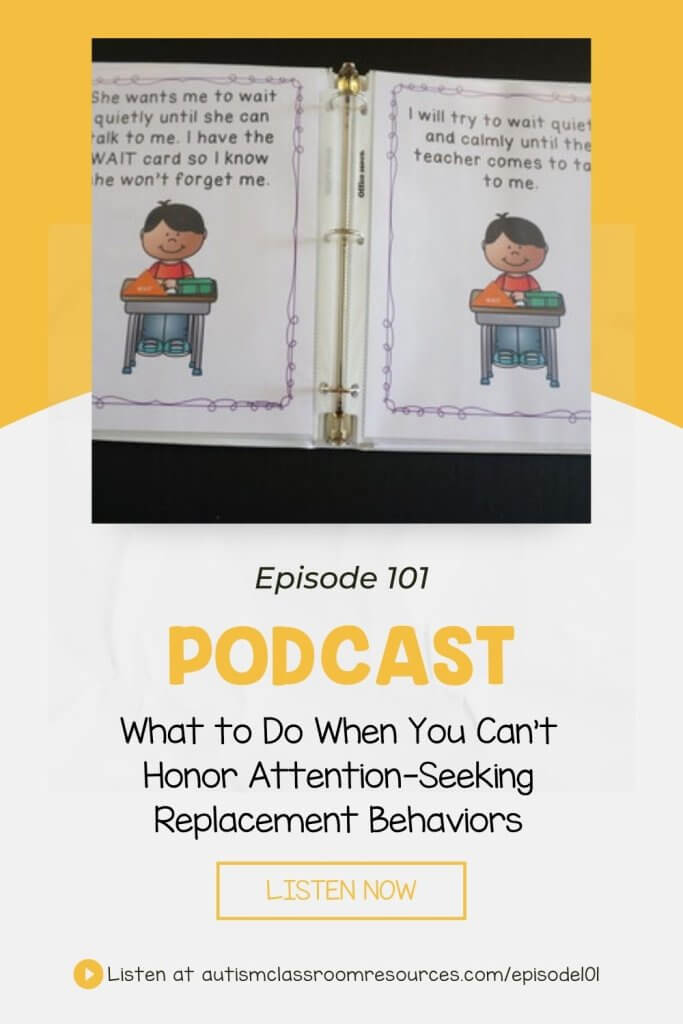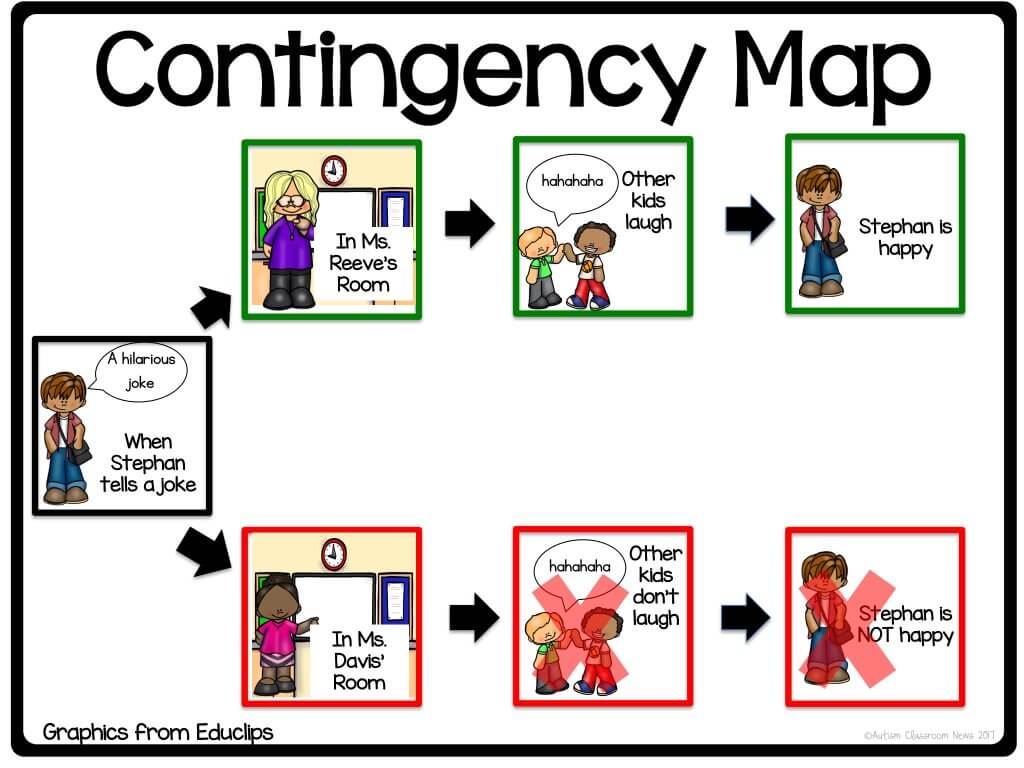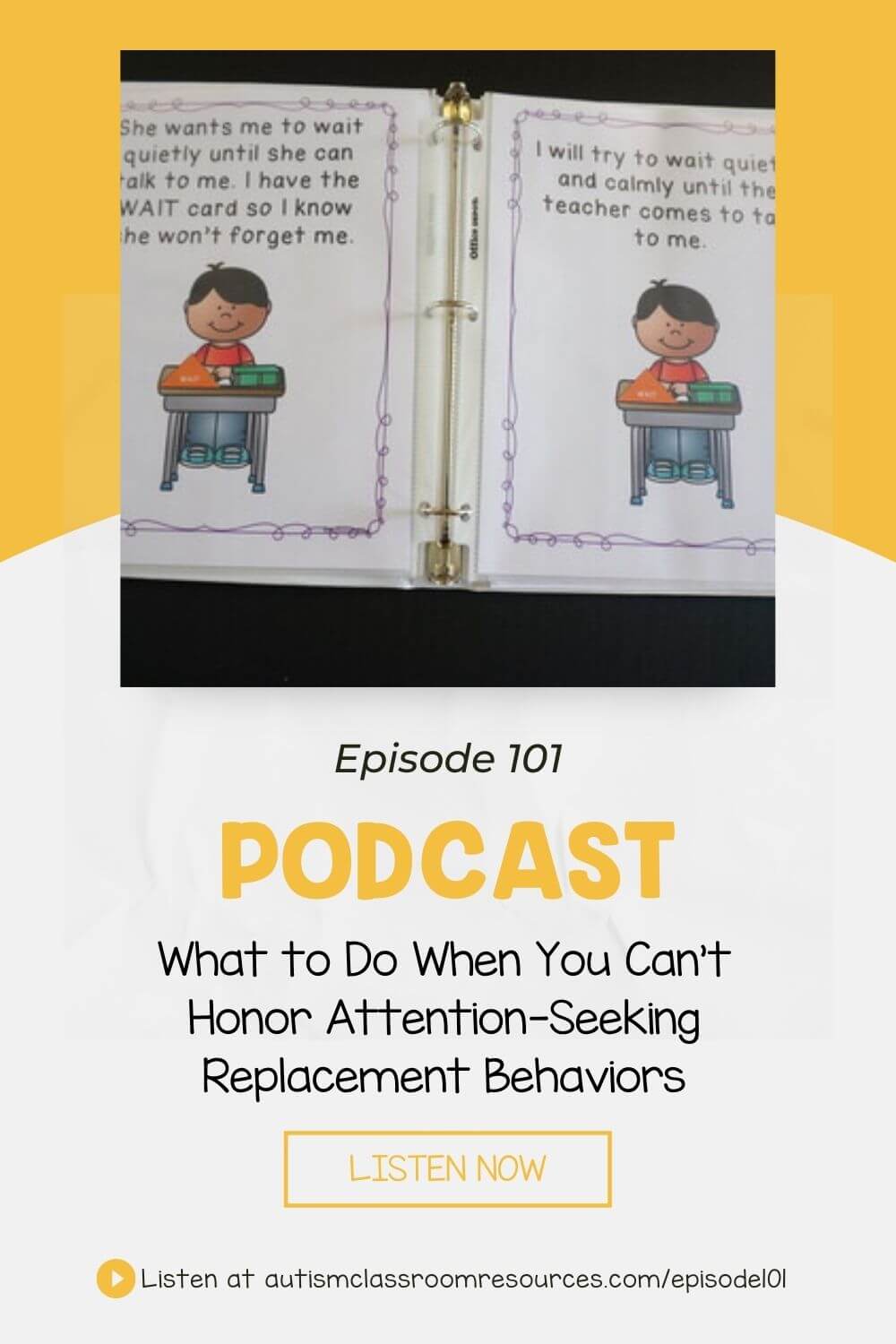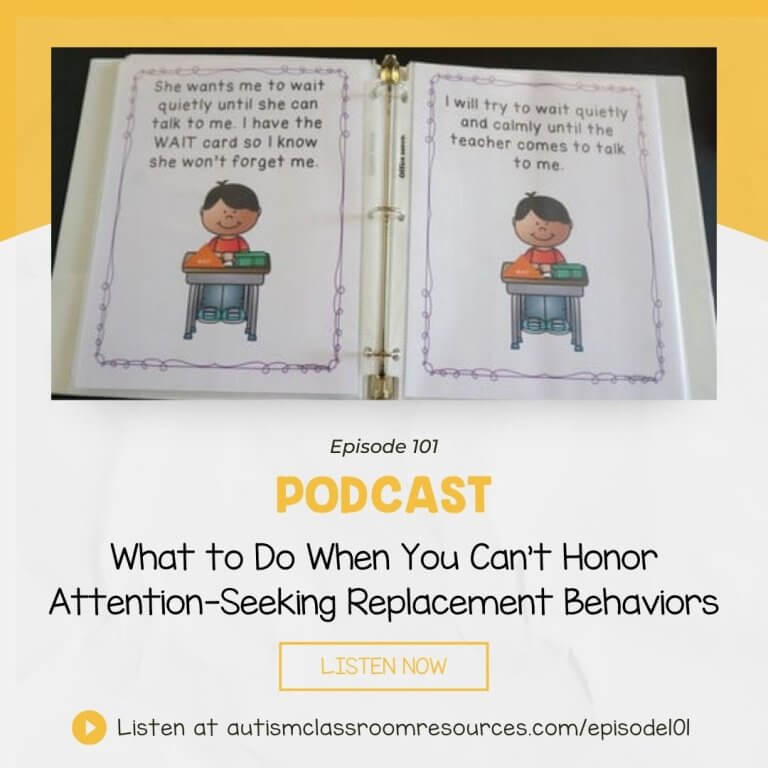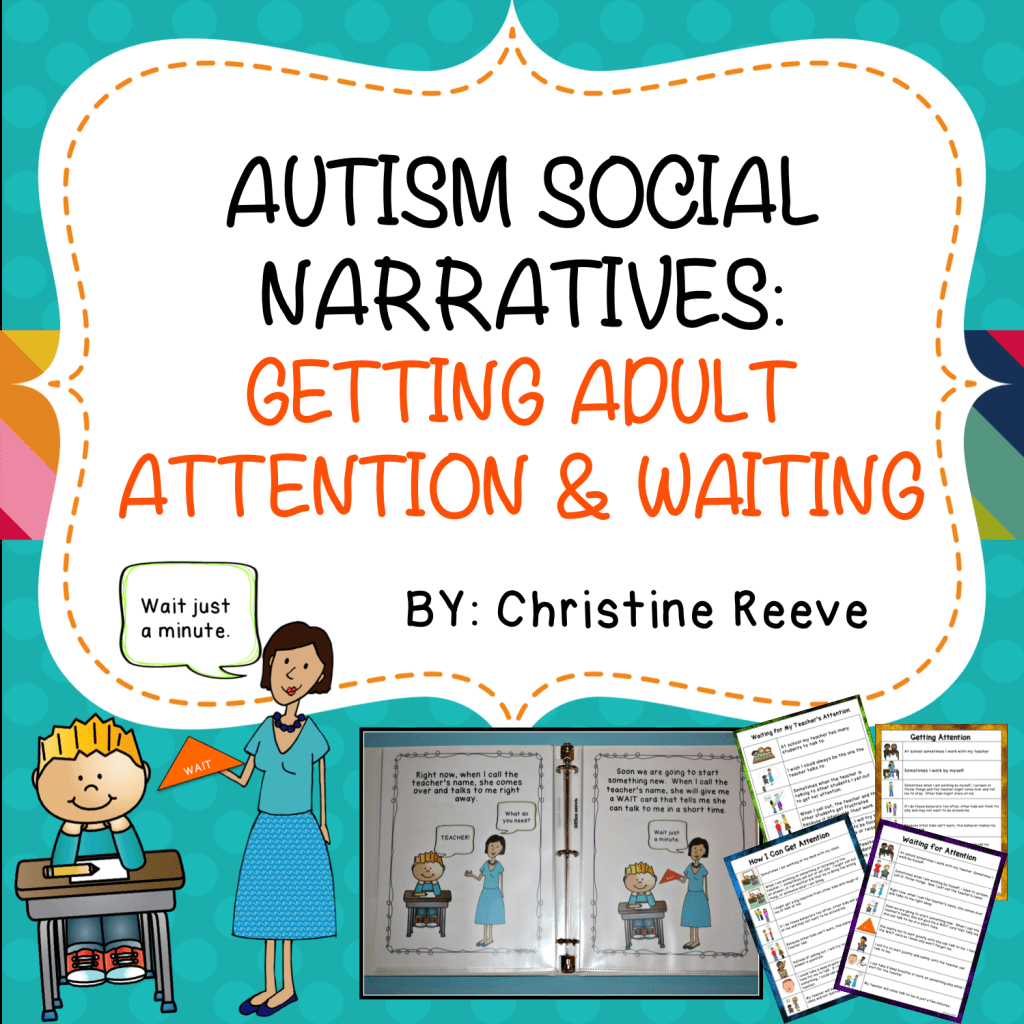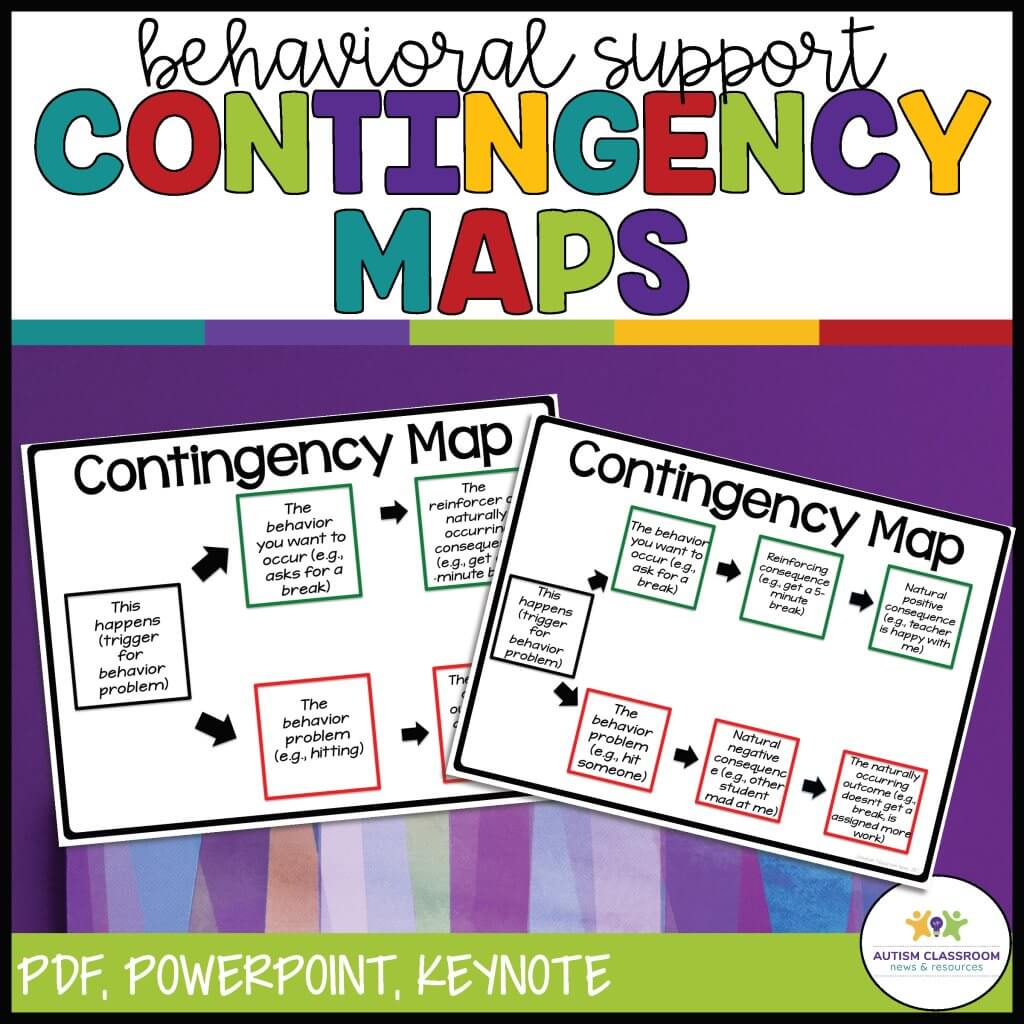Welcome to the Autism Classroom Resources Podcast. The podcast is for special educators who are looking for personal and professional development.
Dr. Christine Reeve: I’m your host, Dr. Christine Reeve. For more than 20 years, I’ve worn lots of hats in special education. But my real love is helping special educators like you. This podcast will give you tips and ways to implement research-based practices in a practical way in your classroom to make your job easier and more effective.
Welcome back to the Autism Classroom Resources Podcast. I’m Chris Reeve and I’m your host. Thank you so much for being here today. I want to talk a little bit about Stefan today. Stefan’s FBA showed that he’s pulling other students’ hair and hitting them. Sometimes doing the same to adults resulted in his getting a really big reaction from the peers and adults in his classroom. It gained a lot of attention. Got a lot of big yelling and screaming and reaction from his environment. People really paid attention to him when that happened. In the small group setting of his special ed classroom, as a replacement behavior, they taught him to tell jokes to his peers and work with a small set of peers to provide attention and reaction to those jokes and work to block his physical access to them when he started to become aggressive. They really boosted the attention for that replacement behavior of telling jokes while they lessened the reaction to the attempts to touch them before he got to the aggression. They blocked him very early in that behavioral chain and so everything was going pretty great for them in that setting.
Stefan’s challenging behavior was decreasing significantly. His replacement behavior was increasing. He was generalizing. He’s joke-telling to other students in the classroom. He didn’t need to be blocked or even need as much supervision when he was interacting with peers because his behavior had improved. He was even doing well with his behavior in the larger setting of the lunchroom. The team decided that it was time for him to start spending some time in his general education classroom. That was when they started to see the aggressive behaviors start to return. Part of the problem was that the general ed teacher pointed out that it was really difficult for the peers in her classroom to respond to Stefan’s jokes regularly in the middle of class. Especially because although he was telling them less frequently in the special ed class, he’d increased how often he was telling them in general ed and they were really getting disruptive. What they were supposed to do was to respond. When they didn’t respond, he got aggressive.
That is where I want to start with today’s episode. What do we do with students like Stefan when we can’t honor their attention-seeking replacement behavior? How do we avoid getting a resurgence of the negative behaviors or sabotaging the behavior support plan in a new environment? In addition, I’ve got some free tools for you to download that can help you put these suggestions that I’m going to make into place. As I talk about the episode, I’ll tell you about them and you can find them in the post for the episode. So, let’s get started.
We’re spending some time talking about challenging behavior in these episodes. In past episodes, I’ve talked about assessing behavior and creating support plans, and teaching replacement behaviors. I will include links to those episodes and blog posts in the post that goes with this episode so you’ll have all that background information. But in this set of episodes, I’m really digging down deeper. It’s critical that before these pieces you have the FBA and you know that the challenging behavior is serving to gain attention or reaction from adults or peers in the environment. You’re actively teaching or you have already taught the student to gain attention or reactions from the environment in an appropriate way. You also want to make sure that the appropriate response is getting that reaction in a way that is more efficient than the problem behavior like I talked about in Episode 98. That reaction is as strong for the appropriate behavior as it is for the negative behavior.
For instance, if you’ve taught a student like Stefan to tell jokes to get a reaction from peers because just asking them to play didn’t get a big response. That the pulling of their hair did, you want to make sure they’re getting that big reaction for those jokes. But you’ve discovered that there are times when the replacement behavior just really can’t be reinforced with the level of reaction that’s needed to make it work like Stefan in the general ed class. That starts to undermine the effectiveness of your behavior support plan. That’s really where we are with Stefan. I’ve got five things that we could think about that might help Stefan be more successful. Some of them are things that we might have wanted to do before we transition to him to the new environment. Some are things that we could add into the environment that he’s already in and work through while he’s there.
The first is that one of the things we might want to do before we made the transition is to teach him to wait for attention. Part of the protocol for teaching replacement behavior should be teaching the student to handle the delay of reinforcement. We shouldn’t just stop at teaching him to request the reinforcements. We got to make sure that we start to teach tolerance for delays. Some students will manage this on their own and they’re not going to need us to actually teach them to pave that reinforcement. But some will need us to teach them how to wait for the reinforcer of attention. We can do this by progressively delaying the attention with a signal to wait and then reinforcing it. I have a whole blog post on this specifically for teaching students how to wait for attention. I’ll make sure that the link to that is in the show notes for this post. You can find it at autismclassroomresources.com/episode101. We should always make sure that we’re teaching this delay of reinforcement as part of the process of functional communication training. If you remember the Special Educator Academy, we have a whole workshop on teaching students to request attention and FCT. We have a quick win specifically on teaching waiting. And if you aren’t already a member of the Academy, come grab a free 7-day trial and find out what you’re missing and all the different types of training that we have.
Next up, we could also use non-contingent reinforcement using attention. If you’re in a situation in which you can’t give the reaction when it’s requested, you can increase the use of random presentation of that reaction or attention throughout the time that the student is there. You want the reaction to not be contingent on the student’s behavior. They don’t have to do anything to earn it. It’s random. You’re simply trying to increase the general attention that’s being paid to the student regardless of their behavior so that you potentially decrease their motivation for the negative behavior to act out to get the attention. That doesn’t always work perfectly and you may need to provide that reinforcement more frequently than you’re able in that setting. But it is worth putting in place to see if you can curb that reaction seeking. It can be used with some of our other strategies as well. You can mix and match some of these things that I’m talking about.
The third thing and one of the things you could also mix and match are visuals. We might want to use visuals to show the student when he’s going to be able to access the type of reaction that they’re using to receive the replacement behavior. For Stefan, I could put a visual on his schedule that shows him when he’s going to be able to tell jokes again. I might have a universal “NO” sign or an “X” over the present activity to remind him that he’s not going to get attention for telling jokes now. Then I might put jokes back on his schedule to show him when he can use them again. If he starts to get upset or tell a joke or starts to engage in negative behavior, I could redirect them back to the schedule non-verbally to show him when he can use that strategy again.
Number four, I could use contingency maps which are another form of visuals. Contingency maps are visual problem solvers. They help a student see how situational behavior results in specific outcomes. In Stefan’s situation, it might be if I’m in Miss Davis’ room in general ed and I tell a joke, I might be asked to be quiet. If I tell too many jokes, I might be asked to leave the room and that makes me unhappy. This is all mapped out in boxes with words and or pictures. He might have another part of the map that shows if I tell a joke in Miss Reeve’s class in special ed, kids and Miss Reeve will probably laugh and tell me it was funny and we’ll keep working and I will be happy. This type of map helps him to see which situations the strategy is likely to be helpful with. I’ll put an example of a contingency map in the post for this episode at autismclassroomresources.com/episode 101. You can download a free editable set of posts from the resource library there as well. There’s a universal “X” and “NO” sign in them. There are printable visuals and templates in PowerPoint keynote and PDF format that you can use.
Number five, we can use limits. I often would use visuals with this strategy as well. I would give the students limits on how many times they can use their attention-seeking strategy during a specific time. I would practice this in a smaller setting in which the student is successful. First, before I throw them into a setting in which it’s going to be more difficult and which the attention may not be as readily available in which case they’re going to need more redirection. With Stefan, I might practice it in special ed before I put it in general ed and really put limits on him. I wanted to be successful with it so that he gets an understanding of how it works before I really start pushing those limits. He needs to be successful. You don’t want to go from free access of telling jokes to only three opportunities a day overnight. You want to gradually fade out. Visuals might help Stefan to understand how many times you could tell a joke as well as when it’s in effect. He might have a number of tickets that he turns in or a list of numbers of times that he can tell a joke. Maybe he can tell three jokes during his time in general ed. He has to cross off each time he tells one. Then when he’s out of turns, he can’t do it again.
The sixth thing you can do is you can use social narratives. You can pair many of these strategies with social narratives or social stories. This is a type of narrative that is great for sharing an overview of how the strategies work and other people’s perspectives about the student’s behavior. For instance, in my store, I have a set of materials for teaching students to wait that includes a social narrative or how to ask for the teacher’s attention and how to wait for attention. The social narrative includes perspective statements about why it’s important to wait quietly to avoid disrupting other students’ work. It outlines the expected behavior of raising your hand and waiting for the teacher to call on you before speaking. It includes waiting cards to give to the student to let them know that you saw them and you recognize that they’re waiting and that you’re going to come back and call on them in a moment. So that they know that their attempt was really noticed and heard. It includes a sorting activity for behaviors that are appropriate and not appropriate during waiting time. These are all ways to help familiarize students like Stefan with these types of situations and expectations to prepare them for the environment in which they’re going to be taught and reinforced.
I’ll make sure to include a link to this kit in my store so that you can look at that as well in the blog post. For Stefan, we could use a variety of these strategies in combination to help them be more successful in that larger environment in general ed. Hopefully, these strategies have given you some thoughts about how you can manage when you can’t readily give attention to a replacement behavior for getting attention. Because there certainly are a number of situations you may run into that you may have expected or not expected that to happen for this student. If you’re an educator with thoughts or questions about these situations, hop over to the free Facebook group at specialeducatorsconnection.com and share them with us there. If you’re looking for more in-depth information and learning on how to manage classroom behaviors, come join us in the Special Educator Academy with a 7-Day free trial and about the cost of a weekly Starbucks run weekly after that.
I hope you’ll come back again next week. Until then, I’ll just be here sitting here wondering what replacement behavior I should teach my dog for her attention-seeking behavior.
